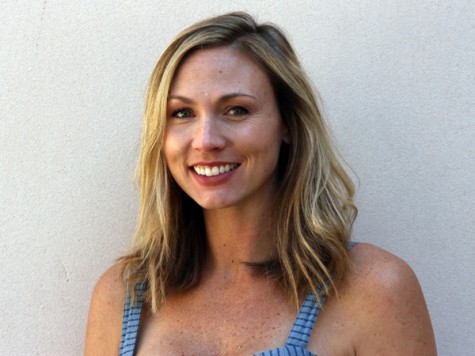Event Confronts Rape Culture
I lost my virginity in a quiet house on the family couch to a much older, much more experienced boy. As a young and impressionable 15-year-old, I wanted to please him, even if it meant going against my own will.
Until this moment, I had never said no to him. When I finally did, I thought he’d listen. Instead, he quieted me with an “I love you,” three words that completely contradicted his actions.
“He loves me,” I thought as I repeatedly asked him to stop. The weight of his body on mine felt heavier with each plea. I did not fight or beg, and I did not push him off or tell him to leave; I simply gave in.
That day, I not only lost my innocence, I lost my voice.
For years, I questioned not only myself but his behavior. I wasn’t sure if what happened to me could be considered rape because I wasn’t attacked or brutalized, which is typically how rape is portrayed in the media. He was my boyfriend. I loved and trusted him. He didn’t rape me, did he?
Rape, much like attackers and their victims, come in all different shapes and sizes — there is no one-size fits all.
Annie Wynne, the program director for Community Service Programs, Inc., gave an in-depth seminar on “The Realities of Rape Culture” on April 9 in CS-177, discussing how attitudes, media and advertising are some of the ways in which rape culture is encouraged in society.
Attitudes expressed about sexual assault are very important. The reaction of the people the victim tells is crucial.
“The victim is much more willing to talk if the first person they tell is receptive and supportive,” Wynne said.
Women may or may not be truthful or forthcoming in telling their story if, for cultural or conventional reasons, they do not feel safe or believed, or if they view themselves as objects who are deserving of the act.
Wynne said the sexual objectification of females is where “women are seen as ‘the other,’ as less than and more deserving of violence.” Gender roles and stereotypes that label women as maternal or passive cause women to be seen as subordinate to their partners, not as sexual beings — rather objects who give pleasure but do not receive it.
“[The rapist believes] if the woman is not these things, the woman deserves it,” Wynne said.
Objectification in the media is seen on all levels. “Panty Raider,” for example, is a video game where the main character receives tools given by alien captives in order to takes photos while models remove their clothing. If he does not, Earth will be destroyed. It received much controversy and was removed from stores in the US.
“Family Guy” caught heat for poking fun at rape in an episode that aired last September. Opponents of using rape in comedy believe such content should never be joked about, while proponents, such as Seth MacFarlane, creator of “Family Guy,” believe that it is funny within certain context.
The way in which we talk about and deal with rape is a big deal. If “Family Guy” can joke about rape, it somehow takes the seriousness away from the issue. Wynne urges people to take a stance and stand against rape in every form. She believes we all can do our part in educating others about rape culture.
Advertisements seen on billboards, magazine ads and commercials portray women as body parts, such as when they only show a pair of breasts or legs, or their bodies without heads. Women selling fashion, art, liquor and fads in provocative and demeaning poses surrounded by men give the idea that they can be bought. The act of dissecting women removes their identity. They are no longer viewed as a whole person, but instead as objects.
These components alone may not provoke rape, but they do encourage it.
“The reality of the situation is that sexual assault is about power and control,” Wynne said. “You have someone who is making the choice to perpetuate that kind of crime, and whoever is most accessible is the easiest victim.”
Typically, sexual violence is portrayed as an act executed by a stranger, but that is often not the case. Date and spousal rape, acquaintance rape and the rape of a child are a few types of sexual assault where the victim knows and trusts the perpetrator.
“Date rape is the most common form of sexual violence,” Wynne said. “Often times, it comes about because you’re in a relationship where you feel like you could trust a person and there may or may not be indicators of an unhealthy relationship, like the cycle of violence, which can be indicative of unhealthy signs in a relationship.”
One indicator could be the offender’s value system.
“They think they are somehow owed, thinking ‘I bought you dinner, you owe me sex, you can’t say no,’” Wynne said. “If that type of attitude is present in that type of situation, or there is a lack of understanding about consent, even if you say yes 10 times and the 11th time say no, that is rape. It is not sex.”
Sexual assault can happen to anyone, at any time.
“We think that it can’t be us,” Wynne said. “That if we accept the reality that it happened to someone we know, then we have to accept it can happen to us.”

